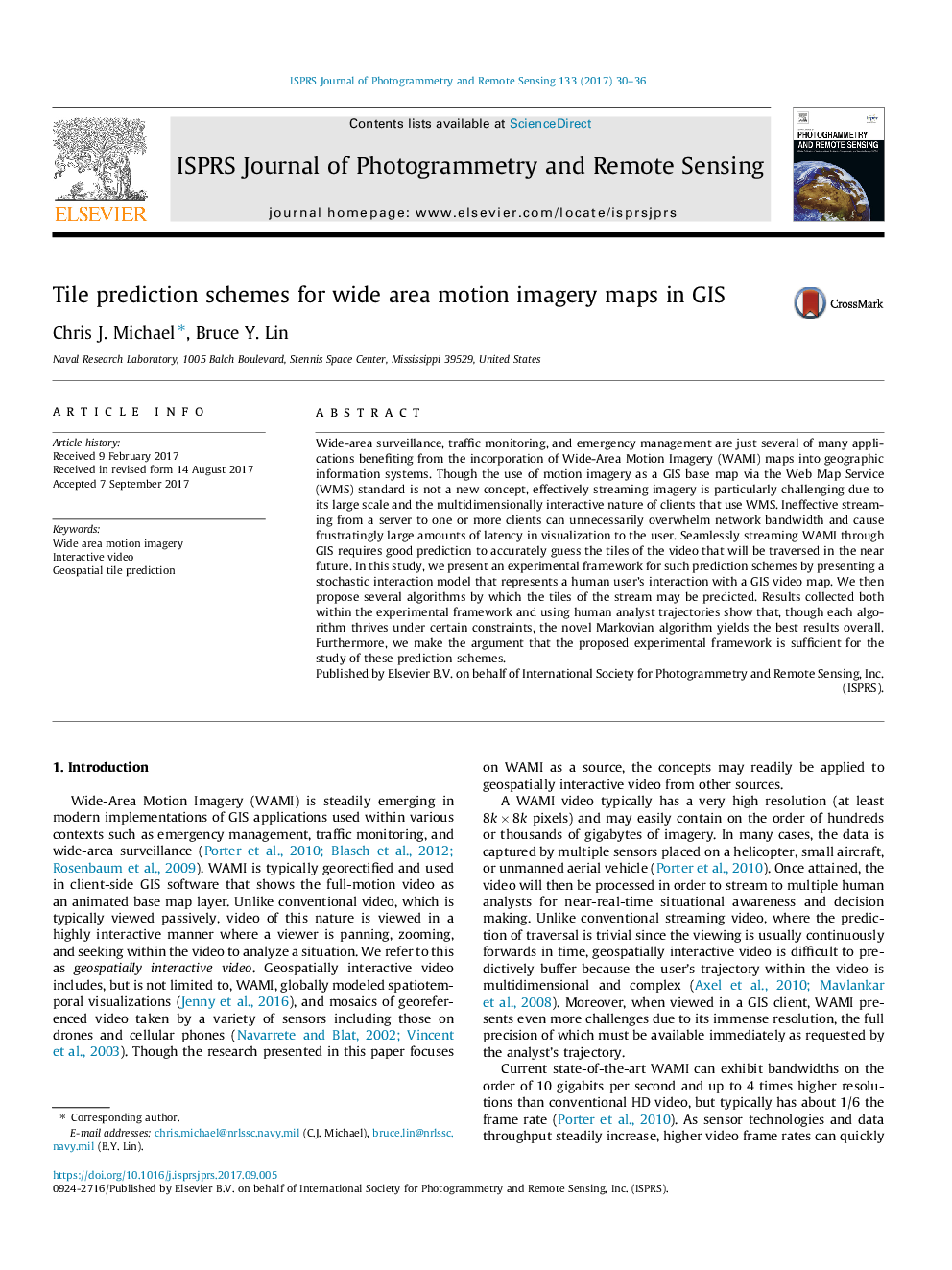| Article ID | Journal | Published Year | Pages | File Type |
|---|---|---|---|---|
| 4972764 | ISPRS Journal of Photogrammetry and Remote Sensing | 2017 | 7 Pages |
Abstract
Wide-area surveillance, traffic monitoring, and emergency management are just several of many applications benefiting from the incorporation of Wide-Area Motion Imagery (WAMI) maps into geographic information systems. Though the use of motion imagery as a GIS base map via the Web Map Service (WMS) standard is not a new concept, effectively streaming imagery is particularly challenging due to its large scale and the multidimensionally interactive nature of clients that use WMS. Ineffective streaming from a server to one or more clients can unnecessarily overwhelm network bandwidth and cause frustratingly large amounts of latency in visualization to the user. Seamlessly streaming WAMI through GIS requires good prediction to accurately guess the tiles of the video that will be traversed in the near future. In this study, we present an experimental framework for such prediction schemes by presenting a stochastic interaction model that represents a human user's interaction with a GIS video map. We then propose several algorithms by which the tiles of the stream may be predicted. Results collected both within the experimental framework and using human analyst trajectories show that, though each algorithm thrives under certain constraints, the novel Markovian algorithm yields the best results overall. Furthermore, we make the argument that the proposed experimental framework is sufficient for the study of these prediction schemes.
Keywords
Related Topics
Physical Sciences and Engineering
Computer Science
Information Systems
Authors
Chris J. Michael, Bruce Y. Lin,
